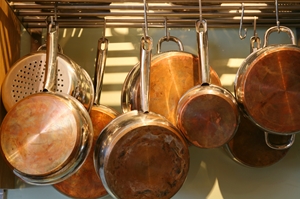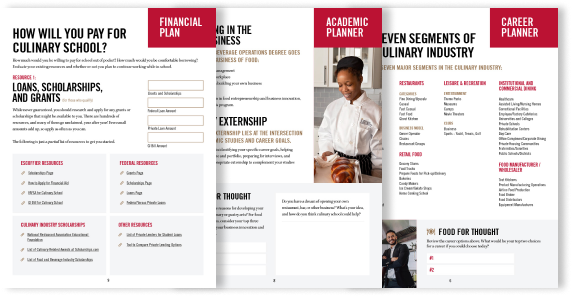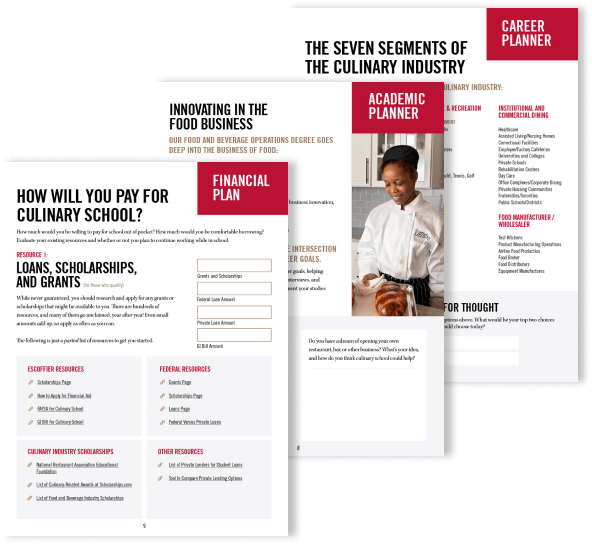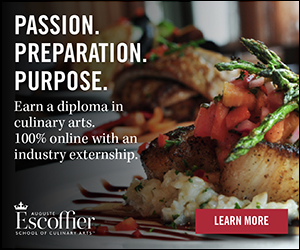The Best And Worst Materials For Cookware
 Most home cooks know that to prepare a great meal you need stunning ingredients, a discerning palette and some kitchen skills. However, you may not be aware that the materials used in your kitchen utensils are also keys to success. As you take online culinary courses and build your pot and pan arsenal, be sure you’re making good choices. Here’s guide to which materials are the best and worst options for cookware and why:
Most home cooks know that to prepare a great meal you need stunning ingredients, a discerning palette and some kitchen skills. However, you may not be aware that the materials used in your kitchen utensils are also keys to success. As you take online culinary courses and build your pot and pan arsenal, be sure you’re making good choices. Here’s guide to which materials are the best and worst options for cookware and why:
Do get these:
Some metals are better than others when it comes to cooking. The right pan can aid in creating a stunning dish. Look for pots and pans that are made of the following materials:
Cast iron: Cast iron pans are trusty tools that have been used for centuries. They conduct heat very effectively and retain their temperature longer than other pans. Furthermore, cast iron is durable and is often passed down through generations.
Cast iron requires extra maintenance. You need to season the pan by coating it with oil or lard (never butter) and placing it in a 300-degree oven for three hours. Pull the pan out every hour and wipe the inside with a cloth, re-grease it, then return it to the heat. Never wash a cast iron pan with soap, as it can damage the material. Instead, wipe it with a soft sponge and use salt if you need an abrasive.
Stainless steel: Stainless steel can be used to cook any kind of food. It’s dishwasher safe, durable and heavy. Though versatile, this material works wonders for browning meat, making fast meals or doing a simple saute.
Unlike cast iron, you can clean stainless steel pots and pans with soap. One of the few downsides to this material is that it can be prone to sticking. Be sure you use oil or butter to prevent this.
Enamel: Some pots and pans are coated in enamel, which creates a non-stick surface and provides even heating. The coating goes on top of stainless steel or cast iron. It’s prone to scratching, so don’t use a metal spatula when cooking with an enamel pot or pan.
Avoid these:
Not all materials make for excellent cookware. If you plan on honing your skills as a cook, then use cast iron, stainless steel or enamel and avoid the following products:
Teflon: Teflon is a non-stick plastic coating. Though inexpensive and easy to clean, it can be toxic. The plastic can release harmful chemicals into food or the air while you cook.
Aluminum: Aluminum cookware provides even heat distribution and good conductivity, but it can release the metal into certain foods. For example, never cook acidic items – such as tomatoes – in an aluminum pan. Aluminum can also warp when exposed to high temperatures, and scratches easily. If you must use this material, don’t cook acidic foods and avoid using a metal spatula.
Copper: As with aluminum, copper conducts heat well but is sensitive to acidity. Copper can often give food a metallic taste and leave it discolored. This material requires regular polishing, so the effort involved in maintaining it isn’t worth the health risks of ingesting copper compounds.
Online Culinary School Planner & Checklist
Online Culinary School Planner & Checklist
Find out what a culinary education can do for you.

What might a career in the culinary or pastry arts look like for you? Online culinary school is a fast, affordable way to launch a career in the culinary or pastry arts. Get the workbook to see how it could help you.


Related Posts:
Tool Spotlight: Kitchen Shears
Kitchen Essentials For Every Chef
How To Make Your Knives Last A Lifetime
If you have questions or comments about this recipe please leave them below.





Recent Comments